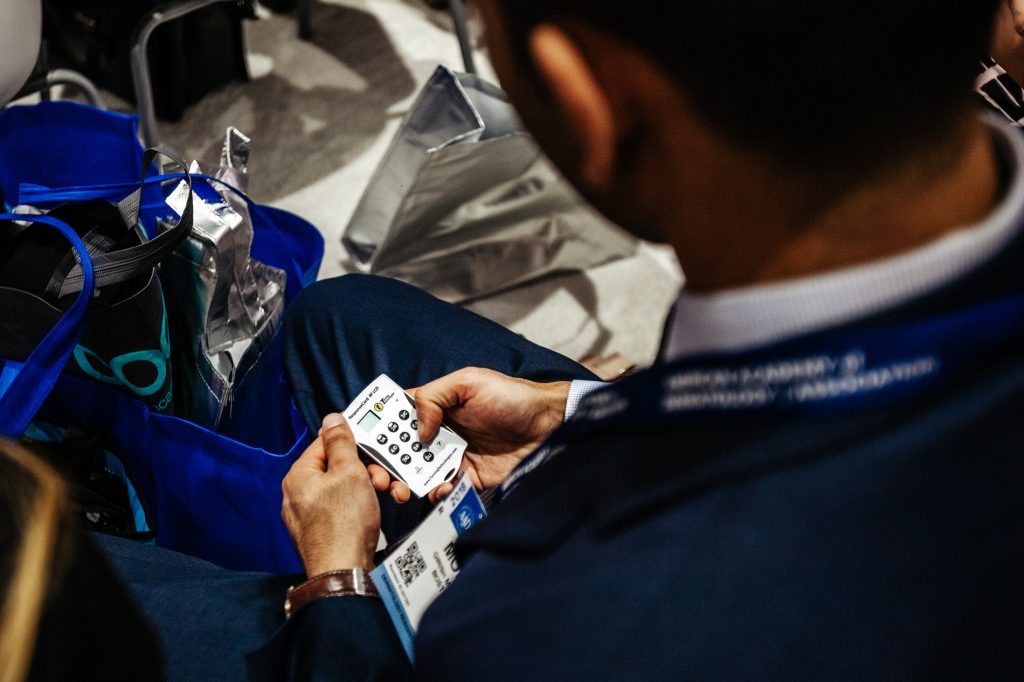Interactive Games for Presentations: Make It Memorable By Making It Fun
Want to make your next presentation memorable? Then get the audience involved. Tactics as simple as questions that require a show of hands can pull people out of passive-listening mode. But if you really want them engaged with your message, then interactive games could be a winning strategy.
High-tech, low-tech, sophisticated or silly, games give your audience a stake in the experience. To find the right one for your presentation, start with a few questions.
What’s my tone? If your topic is light and your audience is up for a good time, you can be humorous—even zany. Ask yourself how far you can push before it feels like “too much.” Even with a serious subject, games are still a viable option. Go for something like audience polling, and keep the approach more buttoned-up.
What’s my objective? Want to drive home a key message? Try a game that includes trivia or call and response. If you want to collect information from your audience or gauge their knowledge, then surveys or polls are a good bet. And if you just want to infuse a little fun, then go for something that gets them out of their seats, competing, and smiling.
What’s my budget? Audience response systems, touchscreens and other high-tech game interfaces are impressive if you can afford them. If not, there are plenty of options that cost little to nothing.
Once you know your goals and parameters, you’re ready to get gaming. Here are some of MPG’s top interactive games for presentations.
Classic Games – For Crest and Oral-B each year, we’re tasked with engaging people as they wait to get into our convention booth. Our objective is to help pass the time, prep them for what’s coming, and reinforce some key product messages. Dental professionals like to have fun, so we’ve done versions of Family Feud, Pictionary and even “hangman” with a Crest + Oral-B twist.
Classic games are great because nearly everyone is familiar with them. So you spend less time explaining and more time having fun.
A few tips:
– Most classic games can be adapted to fit your presentation theme. Choose one based on how it engages the audience, then tweak the name, visuals and other elements.
– Most classic games require audience members to answer questions in order to score or advance. So they’re great for driving home key messages and providing jump-off points for deeper dives.
– Some classic game templates are available in Powerpoint, or they’re easy to create. For a game as simple as tic tac toe, all you need is a dry erase board.
Audience Response: These work well in more structured presentations. And with a range of technologies and costs, it’s not hard to find one that fits your budget. You can take polls or ask the audience survey questions. You can even get segments of the audience competing against each-other. Challenge yourself to be creative and make it fun.
Low-Tech, High-Impact: No money for bells and whistles? These games require little more than a good presenter and a willing audience.
– Elimination: Have everyone in the audience stand, then ask segments to sit based on criteria such as years in their profession. The last people standing should represent an achievement or point of view that your presenter can elaborate on or celebrate.
– Word of the Day: Audience members vote, by show of hands or applause, on a word or phrase that the presenter must weave into his or her remarks.
– Call and Response: Whenever the presenter says a certain word or phrase, the audience must respond with their own phrase and/or action.
– Singalong: Re-write the lyrics to a popular song, put it onscreen, then invite the audience to help sing it. For extra fun, add some choreography.
Not sure whether a game is the right approach for your next presentation? Chat with MPG. We’ll craft a strategy guaranteed to connect with your audience, then execute with excellence.












